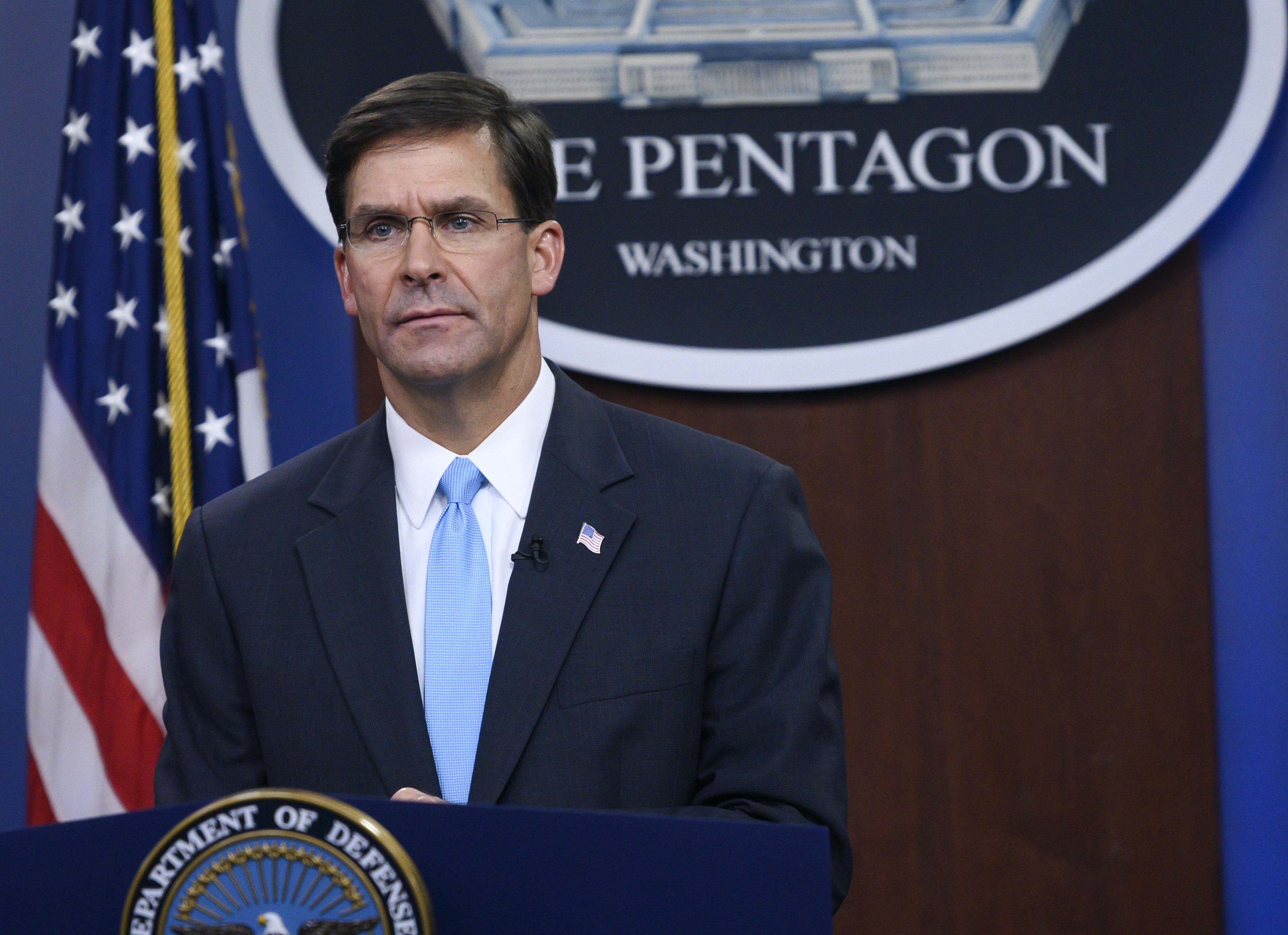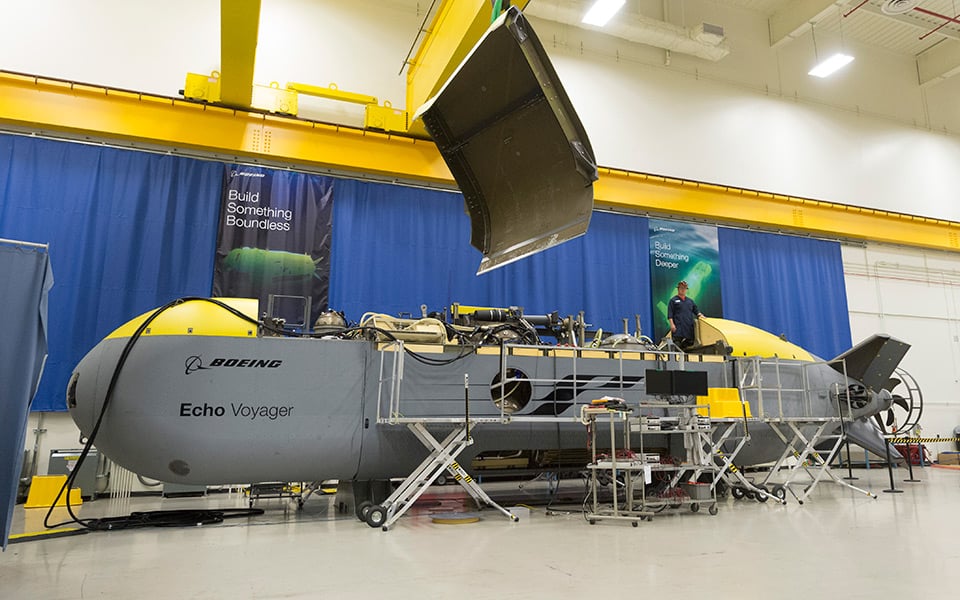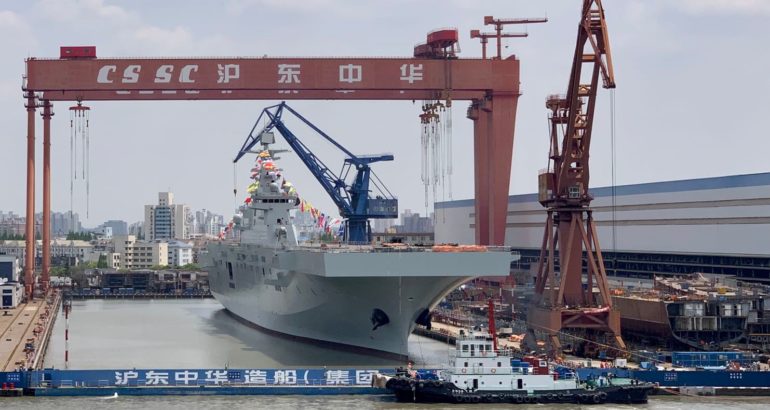
SANTA MONICA, Calif. – Defense Secretary Mark Esper is open to increasing Navy budgets to support a new shipbuilding plan and future force design, he said today in a speech at RAND Corporation’s Los Angeles office.
In a speech meant to outline how the Pentagon was continuing to implement the National Defense Strategy to restructure its capabilities and readiness to deter a war against China – but fight and win if necessary, he repeated – Esper said that “China cannot match the United States when it comes to naval power. Even if we stopped building new ships, it would take the [People’s Republic of China] years to close the gap when it comes to our capability on the high seas.”
Still, he said, the U.S. Navy would not stand still and wait for China to catch up.
Esper’s office never released the Navy’s Fiscal Year 2021 long-range shipbuilding plan or an Integrated Naval Force Structure Assessment that were due out early this year, citing simultaneous criticisms that the Navy’s own plan cost too much and did not produce enough ships and naval power. USNI News understands that much of the cost concerns relate to the long-term cost of sustaining, modernizing and manning the 355-ship fleet the Navy had outlined.
Since February, the Office of the Secretary of Defense has been working with the Navy, Marine Corps, Joint Staff, Cost Assessment and Program Evaluation (CAPE) office and more to come up with a new future vision for the fleet, called the Future Naval Force Study – the results of which Esper was briefed on earlier this week.
“The results are a game-changer that reflect a good deal of serious work and effort based on facts and data,” Esper said today, though he stopped short of outlining publicly what the plan includes.
“To achieve this outcome, we must increase funding for shipbuilding and the readiness that sustains a larger force. Doing this – and finding the money within the Navy budget and elsewhere to make it real – is something both the Navy leadership and I are committed to doing.”

Boosting funding beyond the Navy’s typical allotment of the defense budget is a departure from Esper’s past comments. A major hurdle the Navy faces today is that it is kicking off the Columbia-class ballistic missile submarine program in FY 2021, beginning construction on a $100-billion-plus program even as it is also trying to grow the fleet, build back readiness and material condition, and incorporate new platforms like unmanned vessels and smaller amphibious and logistics ships to support new Navy and Marine Corps operating concepts.
Esper previously said he did not want to pay for the Columbia program – which eats up about 30 percent of the Navy shipbuilding budget each year while in construction – outside the Navy’s shipbuilding program, even if it meant that other shipbuilding programs suffered. He has said that the Air Force shoulders the burden of recapitalizing its bomber, another leg of the nuclear triad, within its budget, and the Navy ought to do the same.
In January, Chief of Naval Operations Adm. Mike Gilday said, “Here’s the deal: we need more money. We need more top line. If you believe that we need overmatch in the maritime, if you believe … that we need to operate forward in great numbers, that we need more iron? Then yes, we need more top line. … One percent of the DOD budget [being added to the Navy’s budget] would be $7 billion a year in the shipbuilding accounts.”
USNI News reported at the time that, during the 1980s’ construction of the Ohio class of SSBNs, the program ate up about 20 percent of the shipbuilding budget. The DoD budget reflected the importance of the program, with the Navy at the time having about a 38-percent share of the total Pentagon budget to make up for the hit to the shipbuilding budget. Now, the new Columbia class will take up to a 30-percent bite out of the shipbuilding account, and the Department of the Navy will have a 34-percent share of the DoD budget, according to previous budget plans.
That Esper would consider adding funds outside the Navy’s typical allotment to support the boon in shipbuilding – which will increase the quantity of ships built and the range of ship designs and shipbuilders that will be included – could make possible a transformation of the Navy fleet and a sprint to reach 355 ships that many had considered impossible under current budget constraints.
“To compete in a 21st-century high-end fight, we will need a future fleet that optimizes the following operational attributes: first, distributed lethality and awareness; second, survivability in a high-intensity conflict; third, adaptability for a complex world; fourth, ability to project power, control the seas and demonstrate presence; and fifth, capability to deliver precision effects at very long ranges,” Esper said in the RAND speech.

Unmanned vessels will be relied on for many of those priorities. After giving his speech, he visited with Boeing in Long Beach, Calif., to see the Echo Voyager prototype being used to buy down risk on the Orca Extra Large Unmanned Underwater Vessel that Boeing will begin constructing later this year. Esper also plans to see the Sea Hunter medium unmanned surface vessel, a Pentagon-purchased prototype learning early lessons to inform the Navy’s MUSV program, as well as visit with other companies in the area contributing to unmanned system research and development.
“This future naval force will be more balanced in its ability to deliver lethal effects from the air, from the sea, and from under the sea. This fleet will be made up of more and smaller surface combatants; optionally-manned, unmanned, and autonomous surface and subsurface vehicles; unmanned carrier-based aircraft of all types; a larger and more capable submarine force; and a modern strategic deterrent,” Esper said in his speech.
“And we must keep investing in our people, ensuring they are the best trained, educated, technologically skilled, and ready force in the world. At the same time, this force must be affordable in an era of tight funding; sustainable over the long term; and operationally ready and available at higher rates. In addition, it must have a robust and healthy industrial base, with modern shipyards and highly skilled workers, which have the capacity to build and maintain the fleet we need.”
Without divulging what the Future Naval Force Study revealed, Esper said the plan he was briefed on met these needs for the future fleet, and “this study will serve as our guidepost as we decide on, program, and build our future fleet, and conduct follow-on assessments in select areas.”

Esper couched the need for this fleet largely in terms of China and the threat it poses not only to the U.S. and its allies but to a rules-based order in the diplomacy, security, political and economic realms.
“China, for example, is exerting its malign influence through its ‘One-Belt, One-Road’ Initiative. This campaign has left weaker nations with crushing debt, forcing them to take their economic relief at the expense of their sovereignty. Additionally, Beijing’s aggression and disregard of its commitments in the South and East China Seas – such as the sinking of a Vietnamese vessel and escorting of Chinese fishing fleets into the exclusive economic zones of Indonesia and the Philippines – are further examples of the Communist Party’s attempts to reshape and undermine the international order that has benefitted nations, large and small,” Esper said.
“Meanwhile, for nearly two decades the United States concentrated on fighting violent extremist organizations in low-intensity conflicts that left us less focused and prepared for a high-end fight against near-peer adversaries. And in the last decade, the Department was crippled by the devastating effects of sequestration, continuing resolutions, and insufficient budgets prior to 2017,” he continued.”
“For years, our military was in a period of strategic atrophy and burning down readiness, as our adversaries watched from the sidelines, searching for opportunities to erode our hard-earned gains.”





